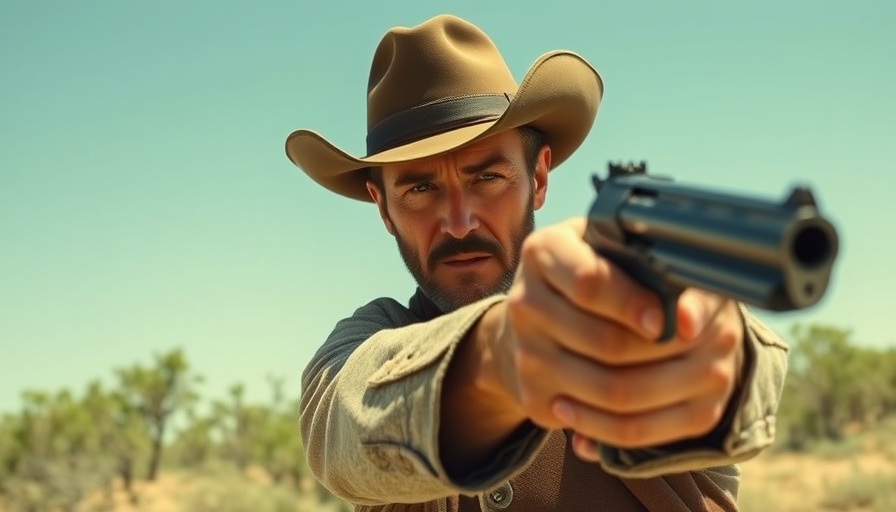
Understanding Parenting Styles: A Guide for Modern Fathers
As a father with nearly 15 years of experience, the quest to be a better parent has led many to explore different frameworks of child development. Celebrated psychologist Diana Baumrind's research from the 1960s provides valuable insights into how parenting approaches can impact children's behavior and well-being. This article explores Baumrind's four parenting styles and offers guidance on which approach may foster the best outcomes for your kids.
The Four Parenting Styles Explored
Baumrind delineated parenting styles based on two critical dimensions: responsiveness and demandingness. Responses range from high support and nurture to coldness and rejection, while demandingness refers to the level of control and expectations parents set for their children. Understanding these dimensions can help fathers better navigate their parenting approaches.
1. Authoritarian Parenting: The Rigid Regimen
Authoritarian parenting, characterized by low responsiveness and high demand, often leaves little room for negotiation. This style operates under the mantra of strict rules and high expectations, enforcing obedience without much emotional support. For instance, if a child resists homework in favor of video games, an authoritarian parent might insist, "You will do your homework now! No discussions allowed!"
Research indicates that children from authoritarian households may experience anxiety, social withdrawal, and problems with self-regulation later in life. This parenting method can stifle a child's ability to make decisions independently, leading to a lack of internal control.
2. Permissive Parenting: The Friendly Approach
In stark contrast, permissive parenting thrives on high responsiveness and low demand. Though nurturing and affectionate, permissive parents hesitate to impose rules or structure. When a child avoids homework, a permissive parent might respond, "No rush, sweetie. Maybe do it later?" This warm approach can come at a cost; studies suggest that children raised in permissive environments often struggle with self-discipline and authority.
3. Authoritative Parenting: The Balanced Approach
Having struck the right balance, authoritative parents offer both high responsiveness and high demandingness. They maintain clear, appropriate boundaries while being nurturing and emotionally supportive. For example, an authoritative parent may acknowledge their child's desire to play video games but emphasize the importance of homework first. This parenting style often correlates with more positive outcomes, including healthier self-esteem and better academic performance.
4. Uninvolved Parenting: The Neglectful Category
Lastly, uninvolved parenting encompasses low responsiveness and low demand. These parents are emotionally detached and offer little guidance or support, leading to potential neglect of their child's needs. Children from uninvolved homes may face numerous emotional and developmental challenges, making this style one of the least effective.
Why It Matters: The Emotional Component
Understanding these parenting styles is crucial, especially for fathers seeking personal growth and self-improvement in their roles. Today's fathers often wrestle with the ideal image of masculinity while managing emotional connections with their families. Adopting an authoritative style not only boosts children's development but also fosters stronger father-child bonds, enhancing family dynamics.
Future Insights: Parenting Trends and Their Implications
In recent years, there has been a shift towards authoritative parenting, reflecting broader cultural changes that embrace emotional intelligence among fathers. Parents today are more interested in understanding their children’s feelings and working collaboratively rather than strictly enforcing authority.
As these trends evolve, fathers can leverage modern resources—such as parenting seminars and support groups—to further refine their approaches, connecting with other fathers who can offer insights and share experiences.
Decisions You Can Make Today
Being mindful of your parenting style can enhance not just your effectiveness as a father but also bolster your personal growth. Here are some actionable steps:
- Evaluate your current style: Reflect on scenarios where your usual approach might not yield the best outcomes for your kids.
- Seek balance: Embrace aspects of authoritative parenting to ensure rules are clear yet flexible, nurturing yet disciplined.
- Engage: Participate in fatherhood workshops or communities to learn from others and adapt your style based on collaborative insights.
A Call for Responsiveness
Ultimately, the goal of understanding parenting styles goes beyond mere academic interest. It’s about becoming more connected, effective fathers. Recognizing the importance of responsiveness and shared authority within parenting can enhance the emotional landscape of our homes.
As fathers, the chance for self-improvement is always present. Embrace the opportunity to evolve; read more on effective parenting strategies and discover ways to improve your relationships with your children. This journey not only builds a better future for your kids but also enriches your life as a father.
 Add Row
Add Row  Add
Add 




Write A Comment